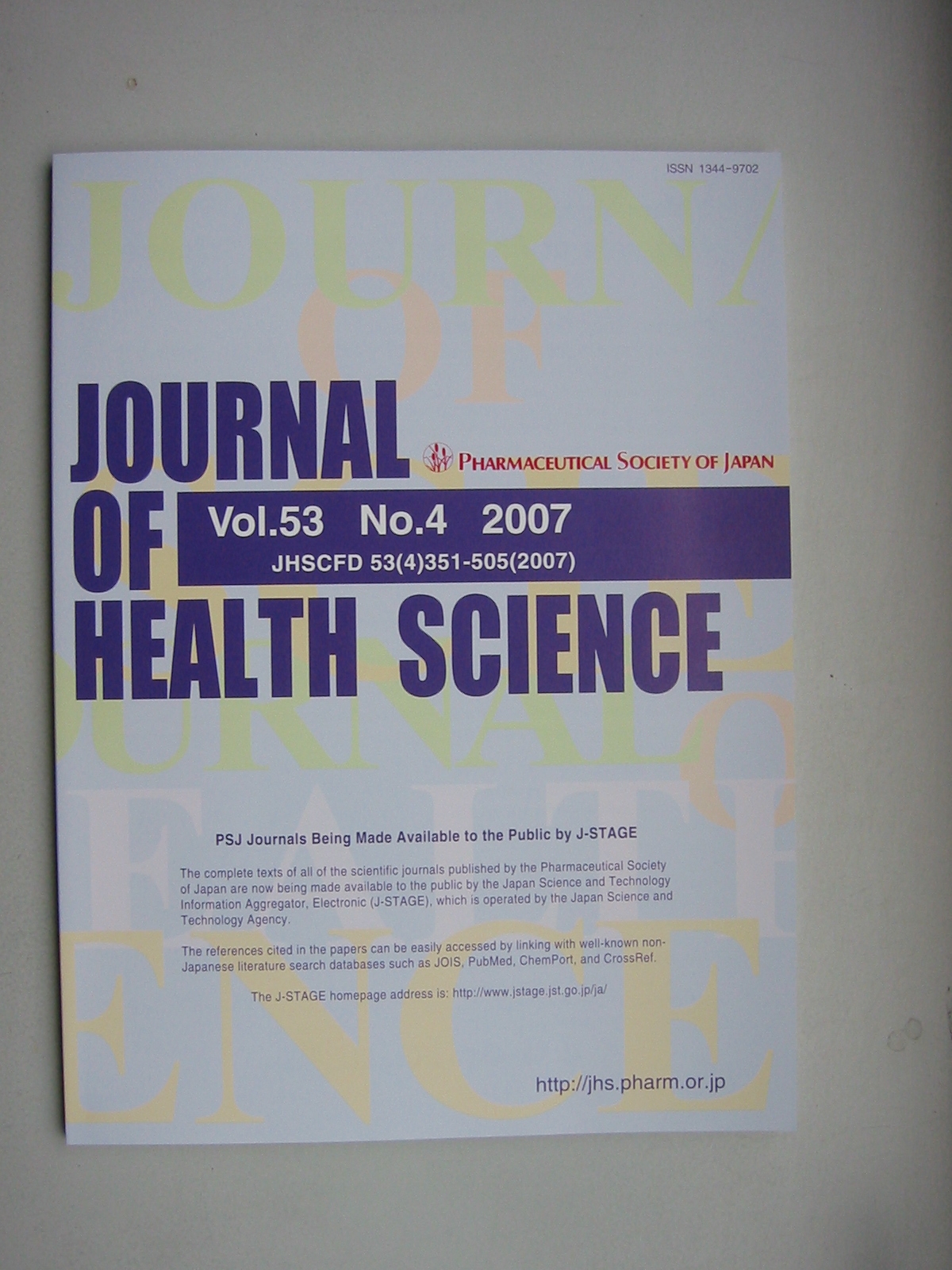Volume 52, Issue 4
Displaying 1-25 of 25 articles from this issue
- |<
- <
- 1
- >
- >|
REGULAR ARTICLES
-
2006Volume 52Issue 4 Pages 339-343
Published: 2006
Released on J-STAGE: August 01, 2006
Download PDF (199K) -
2006Volume 52Issue 4 Pages 344-351
Published: 2006
Released on J-STAGE: August 01, 2006
Download PDF (165K) -
2006Volume 52Issue 4 Pages 352-357
Published: 2006
Released on J-STAGE: August 01, 2006
Download PDF (513K) -
2006Volume 52Issue 4 Pages 358-367
Published: 2006
Released on J-STAGE: August 01, 2006
Download PDF (749K) -
2006Volume 52Issue 4 Pages 368-374
Published: 2006
Released on J-STAGE: August 01, 2006
Download PDF (2093K) -
2006Volume 52Issue 4 Pages 375-382
Published: 2006
Released on J-STAGE: August 01, 2006
Download PDF (271K) -
2006Volume 52Issue 4 Pages 383-389
Published: 2006
Released on J-STAGE: August 01, 2006
Download PDF (442K) -
2006Volume 52Issue 4 Pages 390-396
Published: 2006
Released on J-STAGE: August 01, 2006
Download PDF (268K) -
2006Volume 52Issue 4 Pages 397-405
Published: 2006
Released on J-STAGE: August 01, 2006
Download PDF (345K) -
2006Volume 52Issue 4 Pages 406-411
Published: 2006
Released on J-STAGE: August 01, 2006
Download PDF (408K) -
2006Volume 52Issue 4 Pages 412-418
Published: 2006
Released on J-STAGE: August 01, 2006
Download PDF (227K)
RESEARCH LETTERS
-
2006Volume 52Issue 4 Pages 419-424
Published: 2006
Released on J-STAGE: August 01, 2006
Download PDF (237K) -
2006Volume 52Issue 4 Pages 425-430
Published: 2006
Released on J-STAGE: August 01, 2006
Download PDF (568K) -
2006Volume 52Issue 4 Pages 431-435
Published: 2006
Released on J-STAGE: August 01, 2006
Download PDF (292K) -
2006Volume 52Issue 4 Pages 436-442
Published: 2006
Released on J-STAGE: August 01, 2006
Download PDF (609K) -
2006Volume 52Issue 4 Pages 443-449
Published: 2006
Released on J-STAGE: August 01, 2006
Download PDF (1292K) -
2006Volume 52Issue 4 Pages 450-454
Published: 2006
Released on J-STAGE: August 01, 2006
Download PDF (187K) -
2006Volume 52Issue 4 Pages 455-458
Published: 2006
Released on J-STAGE: August 01, 2006
Download PDF (189K) -
2006Volume 52Issue 4 Pages 459-464
Published: 2006
Released on J-STAGE: August 01, 2006
Download PDF (308K) -
2006Volume 52Issue 4 Pages 465-468
Published: 2006
Released on J-STAGE: August 01, 2006
Download PDF (281K) -
2006Volume 52Issue 4 Pages 469-474
Published: 2006
Released on J-STAGE: August 01, 2006
Download PDF (631K) -
2006Volume 52Issue 4 Pages 475-477
Published: 2006
Released on J-STAGE: August 01, 2006
Download PDF (227K) -
2006Volume 52Issue 4 Pages 478-481
Published: 2006
Released on J-STAGE: August 01, 2006
Download PDF (131K)
RAPID COMMUNICATIONS
-
2006Volume 52Issue 4 Pages 482-485
Published: 2006
Released on J-STAGE: August 01, 2006
Download PDF (240K) -
2006Volume 52Issue 4 Pages 486-488
Published: 2006
Released on J-STAGE: August 01, 2006
Download PDF (491K)
- |<
- <
- 1
- >
- >|
